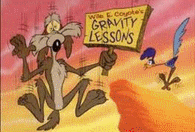A LOOK INTO PROPERLY STRUCTURING THE MARKET MIND
Long-term prosperity in the markets comes from a number of components that are, over time, refined, replaced and tuned to the point of perfect harmony. Those who get places are those who adapt, especially when it comes to the mental structure with which they approach the financial markets. It is in the mental game that good becomes great and great becomes legendary. The mental aspect of trading and investing will determine a majority of your success, yet it is overlooked time and again. After closing my hedge fund in 2006, I was very active in the poker scene, both online and in live games. I would play strictly cash games, dedicating a great amount of time to studying the game intensively. During that time frame, I played well over one million hands of poker, often playing 4-6 tables at once online. Upon reentering the financial markets in a serious capacity during 2009, I've completely stopped playing the game, all but once a month with a group of friends I have known for years. It is just too much of a time suck. I do, however, continue to study the game. I especially enjoy listening to interviews with some of the great, young poker minds that exist today. The interviews are purely a means of studying their thought process. The great players have a thought process that is both fascinating and extremely relevant to participants in the financial markets. Here are three lessons I have learned from both playing and studying poker that have become ingrained within my own thought process: 1. Probability Rules: Successful poker is 100% about accurately determining your opponents range of hands and tweaking the probability with every new piece of information you receive. If you have been following my analysis for more than a few weeks, you will notice that I always speak in terms of probability. There isn't a point of analysis that I publish whether fundamental research reports or price analysis that isn't, at its core, framed in terms of probability. Additionally, I won't sell an investment, make an addition to a position or buy into a new position without framing my decision in terms of probability. That is exactly why I put so much emphasis on price action, relative to others who invest in small-cap names over a long-term time frame. Truly understanding price is the means of determining probability. I like to think I understand price better than 99% of investors in the marketplace. It is my edge. And it is how I am able to determine the probability of success in buying, selling or adding to an investment at any given...
THE DAY THAT MARKED THE END OF THE RUN IN GUN STOCKS
This has been a long time coming. I commented on the fact that RGR, specifically, was under a tremendous amount of distribution in late October, stating that the stock was due for an 80% drop in 12-18 months. That distribution turned into unmitigated panic selling today, as both RGR and SWHC saw some enormous volume selling that took both companies down significantly. It wasn't the fact that RGR saw its biggest volume down day in years today alone, however, that has finally put a lid on the stock. It was also the fact that its primary trajectory served as the point where the acceleration took place. A gap below the primary trajectory that occurs on above average volume and ends on its lows, following a distribution pattern of some months, is an extremely high percentage pattern. Not only that, it is a pattern that is prone to significant destruction in shareholder equity over an intermediate to long-term time frame. RGR has seen its best days. The bears are now 100% in control, with nefarious intentions for the share price. Here is the technical look, starting with a long-term view to demonstrate the enormous downside volume today, followed by a short-term view to demonstrate a violation of the trajectory: click chart to...
BEHOLD THE SHIFTING LANDSCAPE
There are a surprising number of potentially Earth shaking price developments occurring in the market currently. I say Earth shaking because of the manner in which all of these developments seem to be correlating with each other right at important price points. Never mind the fact that all of these instruments are fundamentally correlated throughout the macro spectrum, as well. Here is what I am seeing: - Dow Transports: I mentioned the Transportation Average during the weekend review. Since then it has broken through the resistance mentioned and is now consolidating above the 18 month trajectory. This is a bullish sign for the Dow Transports. A bullish Transportation Average signals a changing landscape for the markets, generally speaking. It has been sometime since the Transports actually led the market up. In the meanwhile, old leaders (think: AAPL) have lost their luster and need to be replaced. Fortuitous timing. - Emerging Markets: For the first time in quite awhile, emerging markets are making multi-month highs while the major US averages lag behind. This is another indication that the landscape beneath the markets is shifting. Last time emerging markets were truly in the lead was 2009. Important to see if this resurgence continues. - Aussie Dollar: Coming up on a very important resistance point. Breakout to the upside looks to be coming. - Euro: Coming up on a very important resistance point. Breakout to the upside looks to be coming. - Gold: I have the next few days as being an important cycle turn date. I will assume, given the way everything is lining up on a macro and technical basis, that the turn will be a low. The acceleration to the upside has the potential to be dramatic. This is especially true given the way the US Dollar is lining up for weakness. Should all of this go the way I think, emerging markets will continue to accelerate, buoyed by a weak Dollar and continuing strength in commodities, especially precious metals. All of this fits into a bullish US equity scenario, which I have taking place into the end of 2012 and throughout 2013. A change in the leadership roles of the market certainly looks to be taking place. Think we are seeing the beginning stages of that...
AAPL: WHY SO PRECARIOUS?
The questions about AAPL have been raining on me this weekend like my name is Destiny and I'm 3 feet away from a chrome pole. As an observer of market history, I become concerned when assets of the investor class are so heavily allocated into one idea as they seem to be in AAPL. The story never ends well. That's the bottom line. Apart from my admitted chronic skepticism of AAPL as an investment, I am willing to deliver some short to intermediate term analysis in order to clarify the picture. AAPL was an extremely accommodating investment on a technical basis as it HAD BEEN behaving in an extremely symmetrical manner for most of 2012. That symmetry allowed me to make multiple calls on AAPL throughout the year that made me look like I had a long grey beard, pointy hat with stars and a wooden cane. Well, guess what? The symmetry in AAPL is dissipating quickly. AAPL is poking its head in places it shouldn't. It is doing so frequently. It is doing so on greater volume than it should. The investment that is AAPL is becoming much more difficult to gauge than it has been for all of 2012. Here is the problem with an investment like AAPL when it becomes difficult to gauge: You can't quantify the risk. And I'm not talking about saying that AAPL is trading at 9 times 2013 earnings so it can't have more than 10% downside. That is the articulate incompetent means of gauging risk. The markets thrive on abusing those who utilize miscellaneous gauges of value to determine risk levels without looking at what price action is saying first. It is why most value managers are absolutely putrid at their chosen profession. Moving on. From a price/technical perspective what is your downside on AAPL versus upside? There is no answer to that question at this point. That is my problem with AAPL. It is not isolated to AAPL either. I will not invest in any vehicle where I cannot quantify my risk within 20 seconds of looking at the instrument. It is the first thing I look at. It is the last thing I look at. AAPL just so happens to be the Beatles of the stock market and the current generation of investors are 17 year old girls, wearing plad dresses and those funny looking pointed eyeglasses girls used to wear in the 60s. You know the ones. From a purely short-term perspective, I will say that the volatility and volume we are seeing at these levels if indicative of either (A) a change in trend back to the upside...
AN IMPORTANT STUDY RESULTING IN 10 CLEAR EXPECTATIONS FOR INVESTORS IN 2013
On Saturday, November 17th, with the Dow closing at 12,588 on Friday, I reintroduced a study that led to a forecast of 13,500 or thereabouts being the closing level for the Dow in 2012. I received a bit of grief with respect to the study from the typical band of articulate incompetents. After all, the Dow closing near 13,500 from 12,588 meant a 7% plus run for the market in roughly 28 trading days. It also meant that the markets would have to rise through a period of governmental strife that has seen the word "cliff" used more times than when it was attached to the last name Huxtable. Difficult to fathom, at the time, I get it. A couple weeks later we are not even halfway through December and the Dow has rallied to 13,155 or 4.5%. A short 350 point gap puts the Dow at the target for year end. Obtainable, without a doubt. Investors are now much less apprehensive to accept the idea. As confident as I was when I published the study on November 17th, I am just as confident now that the target will be obtained. The study that resulted in my deriving this price target is one that should be referred to throughout 2013. The summary of the study is as follows: We are in a post-shock price period similar to the years following the 1987 crash. While the macro environment is quite a bit different than it was in the late 80's-early 90's, the psychological foundation among investors is not. There is little trust in the market. Investor's will remain skeptical of Wall Street. Protection of assets takes precedent over creating capital gains. Furthermore, we are moving along the exact same trajectory point that caused the volatility, followed by the pinned type of grinding along the trajectory throughout the first half of the 90s. Major trajectory points, such as the one we are up against in the Dow, tend to have what can best be described as a mirroring effect. Price action tends to become repetitive in nature over certain periods in relation to the trajectory. If you look at this chart you can see the similarity in post crash markets of 1987 and 2008. This chart, from the same post on November 17th, also shows the similarities. I don't expect this study to begin dissipating in terms of influence anytime soon. The Dow will continue to hug the trajectory throughout 2013. What does that mean for investors? 1. There will be no down quarters during 2013. 2. There will be no substantial up quarters in 2013. 3. 2013 will be a...
HERE IS TO THE DOWNFALL OF MICRO-MANAGING PORTFOLIO POSITIONS
There is a parasite invading the minds of investors in this age of abundant information. This parasite creates a desire for a constant stream of news and data to pacify the mind into a comfort zone that is always restless, never satisfied. Never mind that a majority of the information digested by investors is of the useless variety. Nonetheless, it is those pieces of useless information that are combined within the subconscious to make often times irrational, nonsensical investment decisions that serve to either cut profits short or allow losses to run. Micro-managing portfolio positions has become the preferred modus operandi for investors in the current market environment. It isn't, however, just the current environment that has created this negative trait. It has been an apparent flaw among investors since shares of Dutch East India Company traded in the 1600s. The current environment has made it that much easier to micro-manage positions, however. There is an abundant and endless supply of information to fool yourself into making the incorrect decision with. Don't allow yourself to think you are in an exclusive class. You WILL 100%, without a doubt, make the incorrect decision as a result of micro-managing your portfolio. The constant monitoring and obsessive reasoning behind moves in a portfolio will never allow you as an investor to allow your profits to run. Allowing profits to run is one of the biggest faults I see among the investor class. The scope of punishment has been so great over the past several years that profits seized at a moments notice. I see it myself with the questions I receive whenever a company I have issued a research report on begins to run. The most obvious observation is that investors start beginning to look for excuses to take a profit as soon as any profits are achieved. This is a fatal flaw. You will never make the mark you desire in the markets by taking small profits. It won't happen. There will come anomalous periods of time that take back your small profits faster than you can react. The desire to take profits quickly must be deleted from the deepest levels of your cerebral cortex if there is to be any longevity in your game. How do you go about deleting this fatal flaw? Start by becoming detached from your portfolio positions. You can't be intimately involved with every tick and expect to be successful. Stay away from the need to deeply dissect the reason behind every move a stock in your portfolio makes. There are forces of supply and demand in the marketplace that aren't meant to be figured out. There are...
IT’S DECEMBER, DO YOU KNOW WHERE YOUR CATALYST IS?
There isn't much market analysis that has changed since my weekly review posted on Sunday. We are in a bull market. I am bullish. And I am looking forward to moving up to 100% long from the current 75% long exposure. Simple stuff. I want to discuss the importance of catalysts in an investment. Far too many investors get caught in a trap of looking at an investment from a purely theoretical value basis without searching for what factors can potentially bring out that value. You see, we are not in an environment where equities are in high demand. That simple fact can cause companies that are lacking a tangible catalyst to languish for far longer than investors can stand to wait. The stock being cheap according to every metric in the book doesn't matter. The product being revolutionary makes no different whatsoever. The management being brilliant doesn't make an ounce of difference. None of these qualities matter when equities are held in the same light as a one legged Cambodian hooker. In June of 2011, I wrote an article for TheStreet discussing the importance of catalysts in an investment, along with 3 companies that had clearly defined catalysts going forward. The companies mentioned were CPSS, MAMS and ANFC. Some 18 month after the article was written, CPSS has gained 443%; MAMS has gained 76%; and ANFC has lost more than 50%. I shouldn't have missed CPSS and MAMS this year. They were both on the radar. They were both clear opportunities. I simply got caught up in other names that I thought offered more substantial opportunities. Disappointing error in judgement on my part. Now that we know how on point the analysis for CPSS and MAMS turned out to be, as well as knowing how the analysis for ANFC fell into quicksand, we can gauge the importance and timeliness or lack thereof in each investment. With respect to CPSS, the key read was twofold: 1. They were gaining consistent access to credit facilities that allowed them to lend more to their subprime consumer base, increasing earnings. EARNINGS CATALYST 2. A former board member, Arthur Levine, purchased $1 million worth of the stock in 2010. Mr. Levine had been an active investor in the company at previous points where the company required capital. ACTIVIST/INVESTOR CATALYST Although CPSS was trading at ridiculously low valuations, a valuation measurement is never a catalyst by itself. There needs to be an event or series of events, whether earnings related, macro related or activist related that create a spark for the company. The MAMS investment had two distinct issues that made it attractive: 1....
A MARKET THAT DESERVES TO BE UNANALYZED
The financial media HAS to develop a reason for every market swing. If, at the end of the day, a CNBC anchor comes on the air, proclaiming that the market went up 75 points for no reason whatsoever, they have failed at their profession. Fortunately, my parameters for success and failure are much less rigid. I am not beholden to satisfying anyone with my market prognostications, commentary and analysis. This forum for sharing my ideas is a breathing, living record of my analysis. Along the way, I am hoping it allows some to profit and more importantly, learn from all that I have to share. With that said, I have no problem stating the following: The picture the market is painting at these levels is short-term confusing and deserves to be unanalyzed. I know, unanalyzed isn't a word. It is the only way to explain how to treat the market in the week ahead, however. There are short-term points in the market that don't deserve analysis. As an investor, these are the points when you unwrap the tentacles of your mind from anything having to do with the market. Just like the CNBC anchor who comes up with ludicrous reasons for the behavior of the market on any given day, you are no better as an investor if you feel that a thorough analysis of the market is necessary in every environment. The reason I am unanalyzing the market this week is because of all the short-term conflicts that are sprouting up like a poppy farm in Nangarhar. Financials are conflicting with technology. Commodites are conflicting with each other. Transports are conflicting with industrials. Small-caps with large caps. And the creme de la crepe in all this is that we have a market that is a dancing monkey to a group of politicians who are not only Machiavellian in nature, but misinformed as to the dynamics of the economy as a whole. Does this mean the market sucks from this point forward? No way. Does it mean my price target for year end is in jeopardy? Not at all. It just means that unanalyzing things for the first half of next week is what makes the most sense. I'll be providing further clarity into the situation with my weekly chart review...
PROTECT YA NECK
Frankly, I'm bored. This market neutral position I have adopted doesn't make for a very entertaining portfolio. I prefer acrobatics to the ballet. Adaptability is important, however. Sometimes you must be a ballerina. Other times you have to put on your Cirque Du Soleil tights. I've been in a ballerina costume for nearly two months now. In November it has paid off. With a few days left in the month I am sitting on a gain of about 1% for November. This is important for a number of reasons: 1. It stops the bleeding that last month brought. 2. It puts me ahead of the performance of my benchmark, the S&P 500. 3. It validates my tactical asset allocation approach once more. For those of you who haven't been paying attention or are new to this venue, there are two sides to my process. The first is to look for small-cap stocks with some type of restructuring, distressed or activist angle. I look outside of this venue from time to time, but know that in order to make my bread, I have to use the right butter. I outline all of my investment ideas via research reports, as most of you are aware. The second part of my approach, shrouded in a bit more mystery being that it isn't highlighted as often, involves a tactical asset allocation approach that is mechanical in nature. This means that whatever personal opinion I have about the market or a group of investments doesn't matter. When the bell rings, my response becomes Pavlovian in nature, with complete and utter disregard for whatever else is occurring in the financial ecosystem. I have mentioned many times the emotional dilemma I face from being at odds with the mechanical side of my trading. Give me a recent example, you ask? On November 18th, in a posting titled Everything Is Everything I spoke about my TZA hedge being up some 18% since I initiated the position during the first half of October. I also foretold of a turbulent path ahead for my TZA hedge that would likely create only a single digit percentage profit at the time of my exit. I pacified myself gently and came to terms with my fate, ultimately stating that, "I am perfectly fine with that." The reason I am perfectly fine with giving up a good portion of a profit in this hedge is simple: The moment I become involved in overriding whatever system I have developed for creating consistency in returns is the moment I fail as a portfolio manager. It is the investment equivalent of hurling yourself into a black...
AN ODE TO THE SHORT-TERM TRADER
First, a warning: If you are a short-term trader what you are about to read is going to be disheartening and slightly devastating. It may cause your lip to quiver and salty fluid to drip from your eyes. I don't really care because I am here to spit truth gained from dropping out of college at the age of 19 to trade, working on an institutional trading desk by the time I was 21, starting a hedge fund at 26, spending money like it was going out of style by 28 and losing it all by the time I was 30. With every bull or bear market cycle there are those who come along thinking that they can beat the market utilizing short-term trading strategies based on hourly or daily movements in stocks. At the same time, pops up a crop of supposed market mavens who are there to advise these starry eyed traders of the opportunities across short-term strategies. For every aspiring short-term trader, there is an aspiring market maven who is willing to hold their hand. The dreamer and the facilitator of that dream. The perfect union or so it seems. I have literally witnessed the careers of dozens upon dozens of short-term traders who started in the mid to late 90's. I have also witnessed the careers of the accompanying hand holding, market gurus who accompany these short-term traders. They all start the same way. Inspired by a story about how much John Q. trader made last year at the age of 23 trading AAPL stock by simply buying and selling at advantageous trading points. Or the story of how the guy who used to work an office job discovered an options trading strategy that has managed to provide 5000% gains, allowing him to smile brightly while working from home in flip flops and a wife beater. Flashes in the pan. I do not know of ONE single scalper or trader with a time horizon less than a week who started in the 90s and is still in the game today. Not one. Perhaps more curiously, the professionals stock pickers who purport to be able to beat all the obstacles one faces when trading on a short-term time frame are also gone. Some are in jail. Some are bankrupt. Others have simply vanished to a life making ham & cheese omelettes for Russian tourists in coastal cities across the Eastern U.S. Today an entire new crop of traders and gurus has sprouted up utilizing a new means of disseminating trading ideas through Twitter and various other social media venues. Never mind that today's trading environment is infinitely more difficult than...












